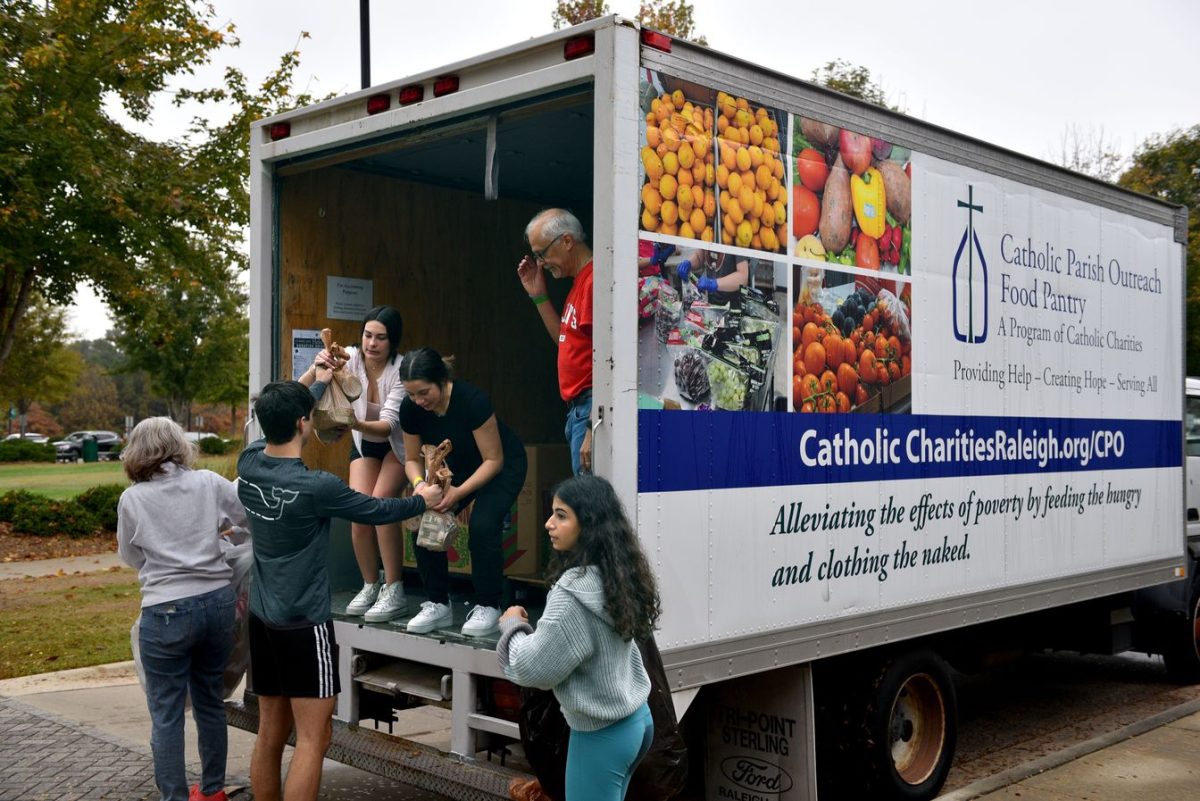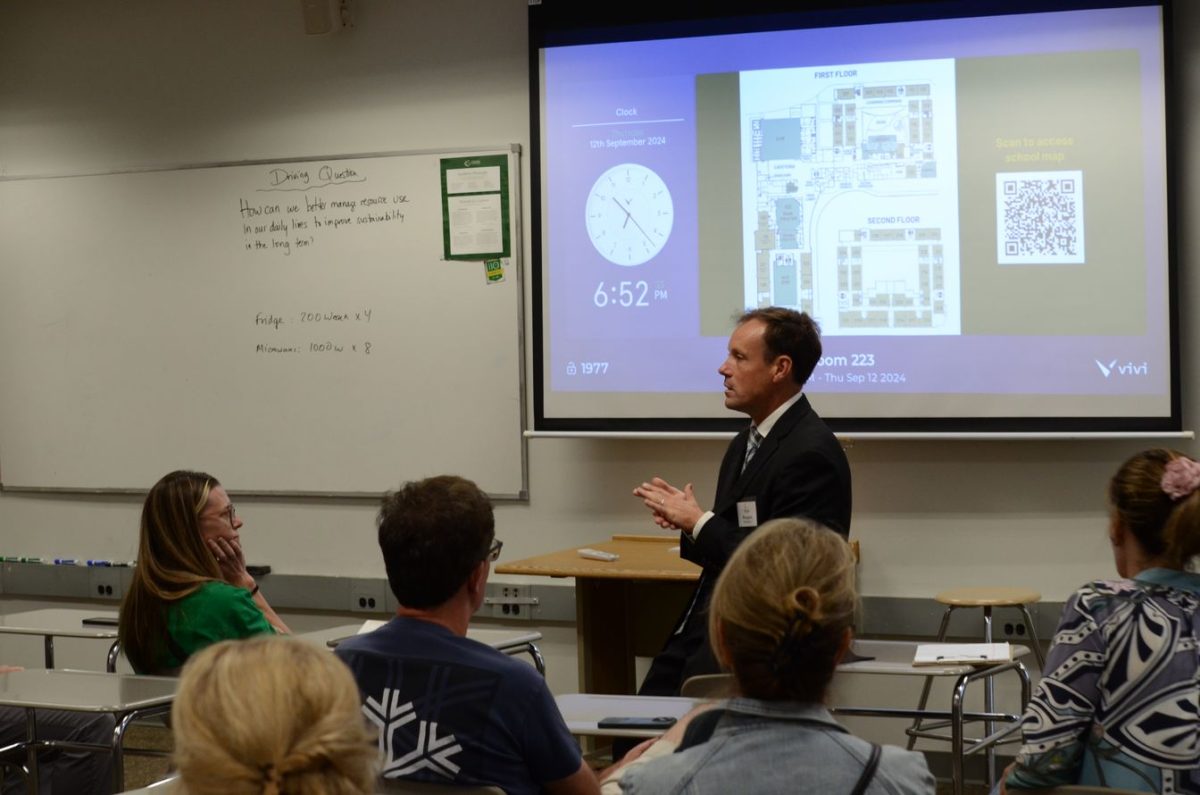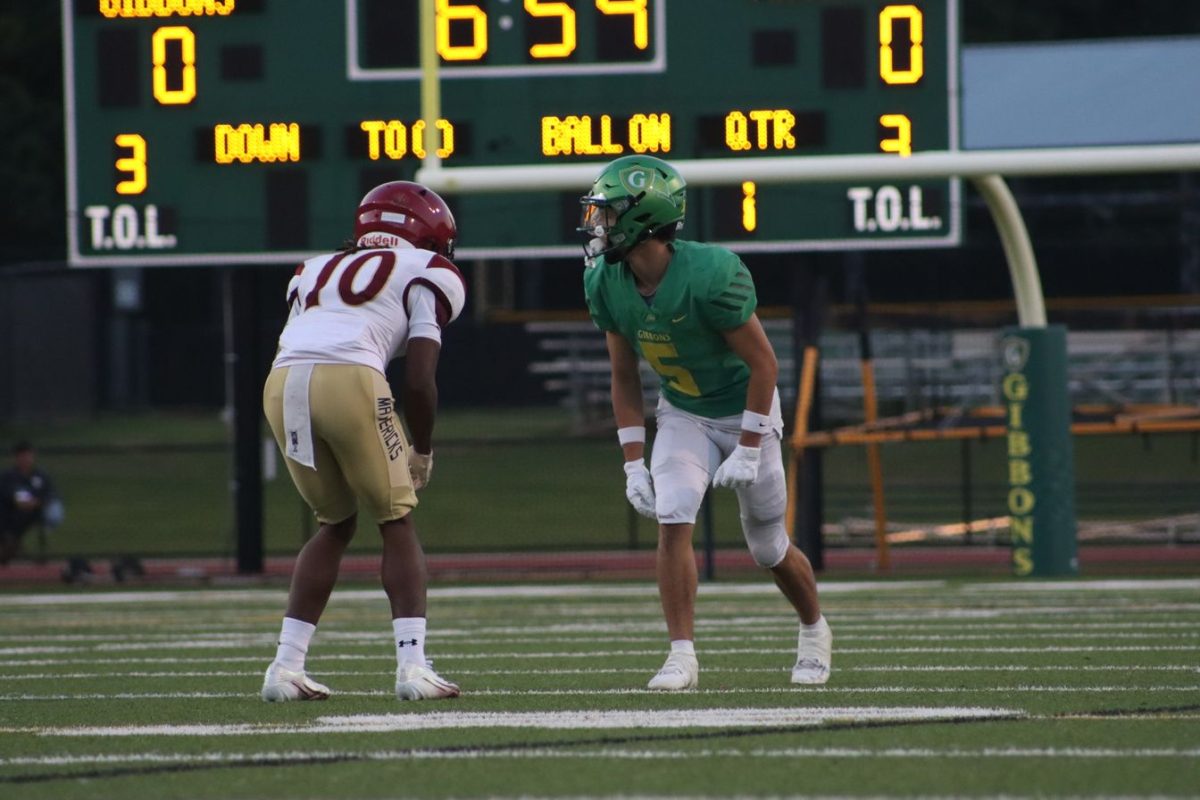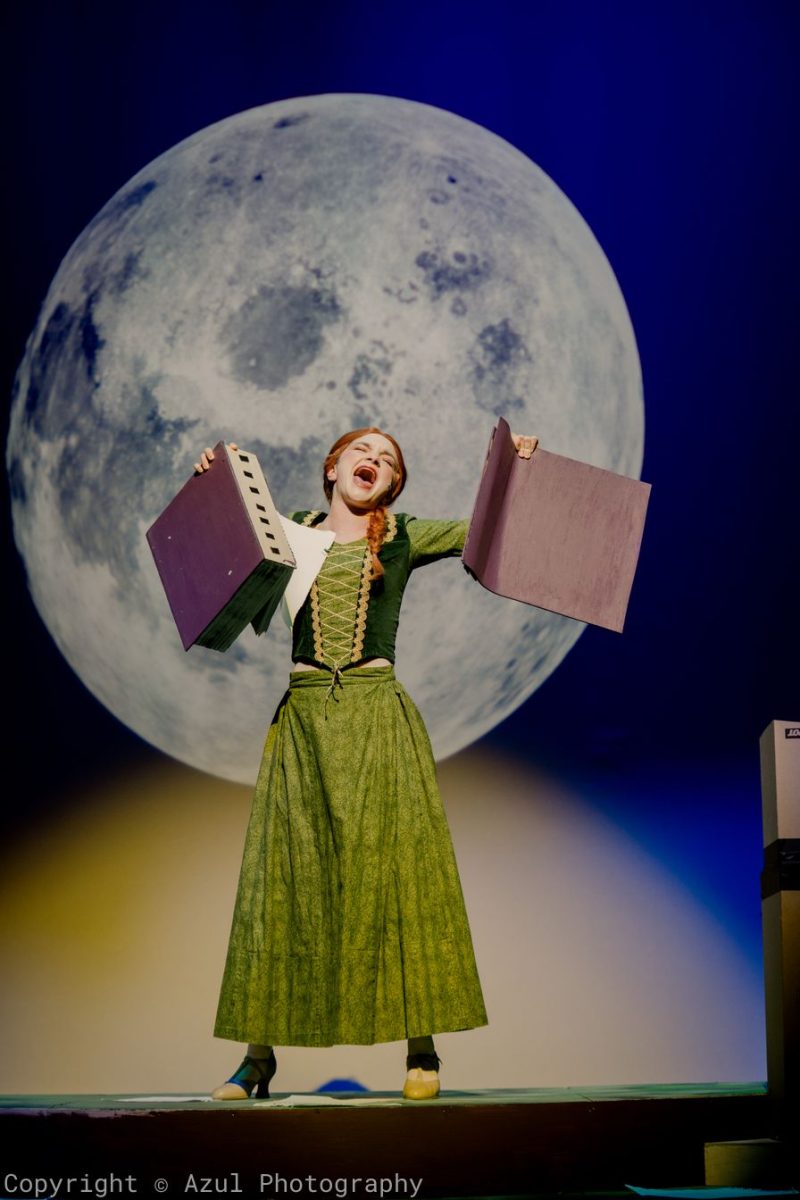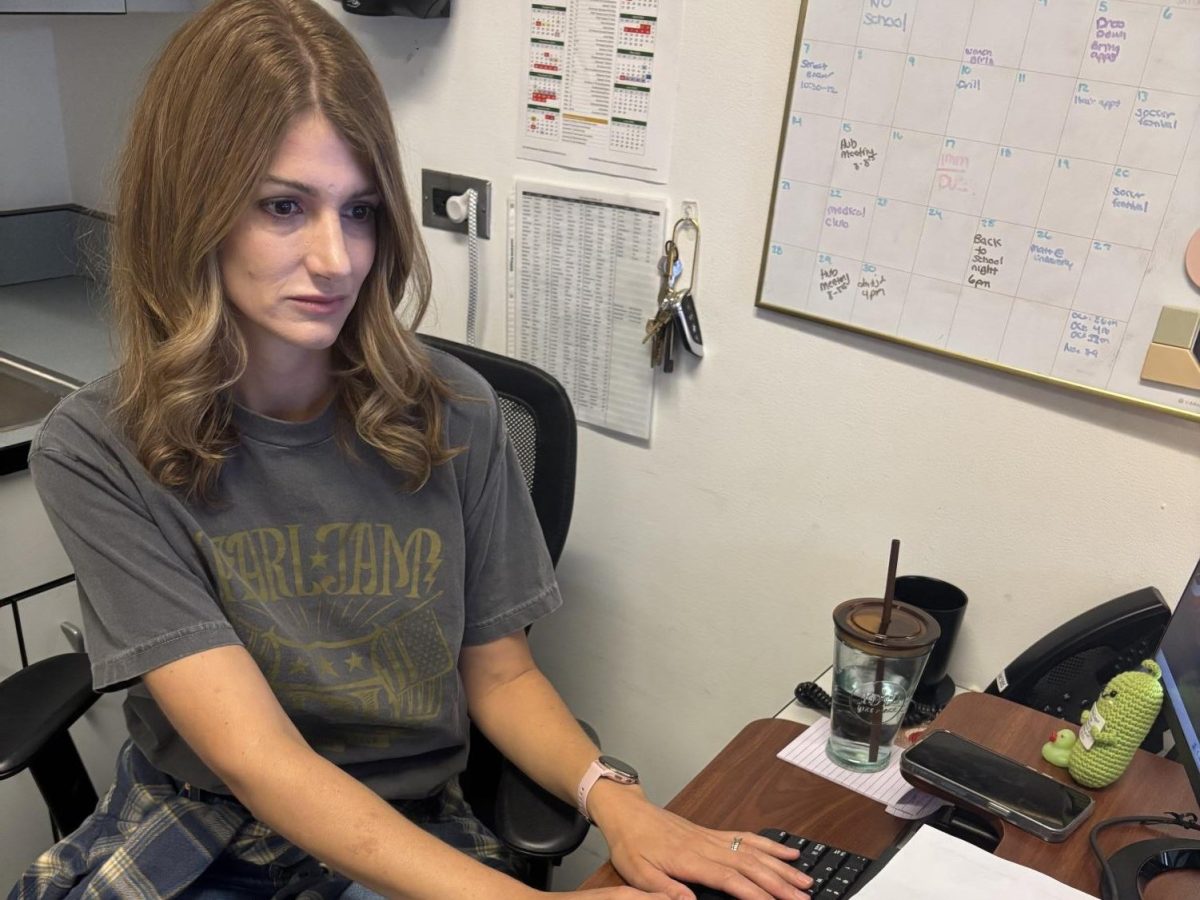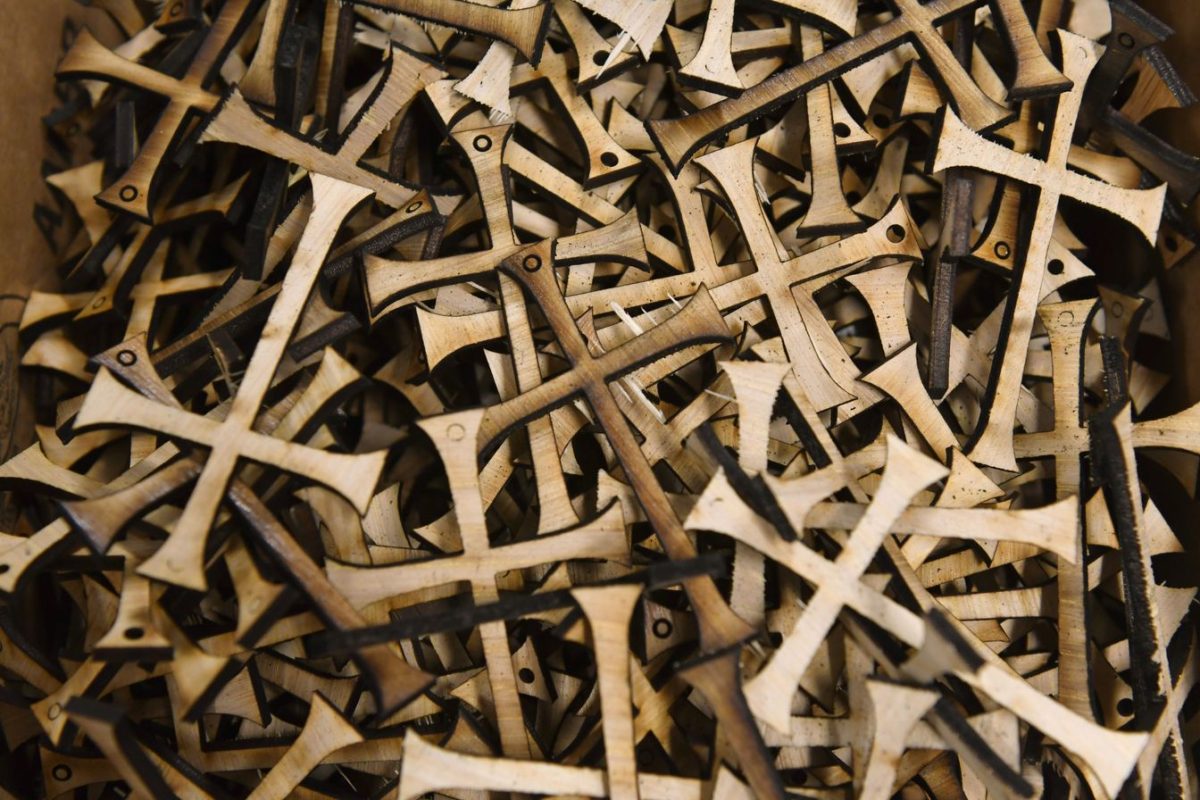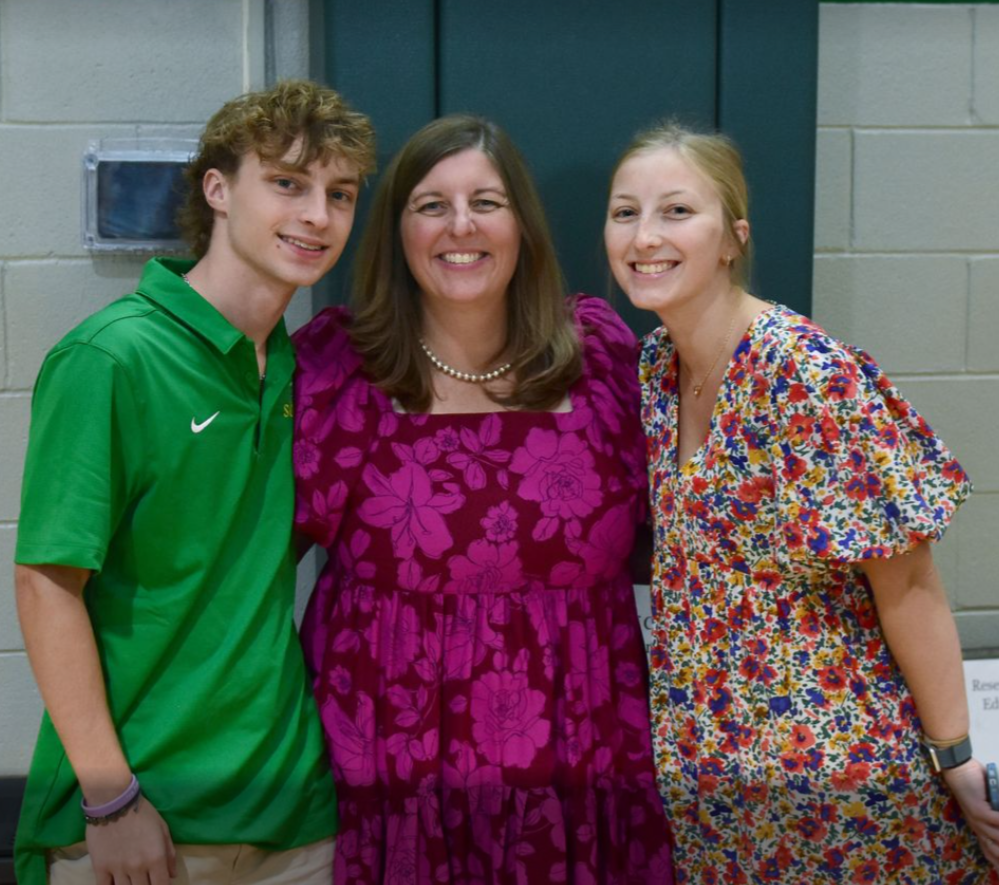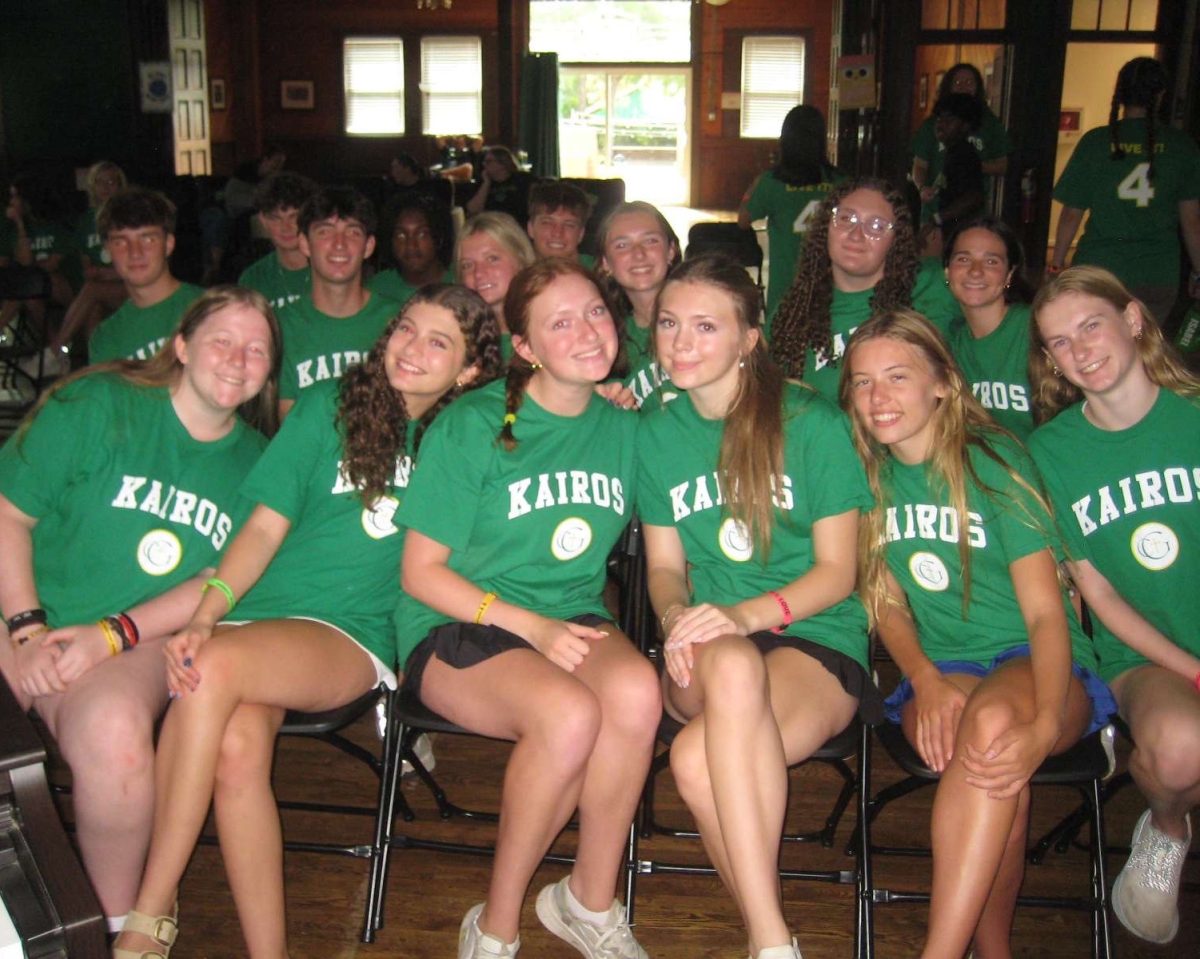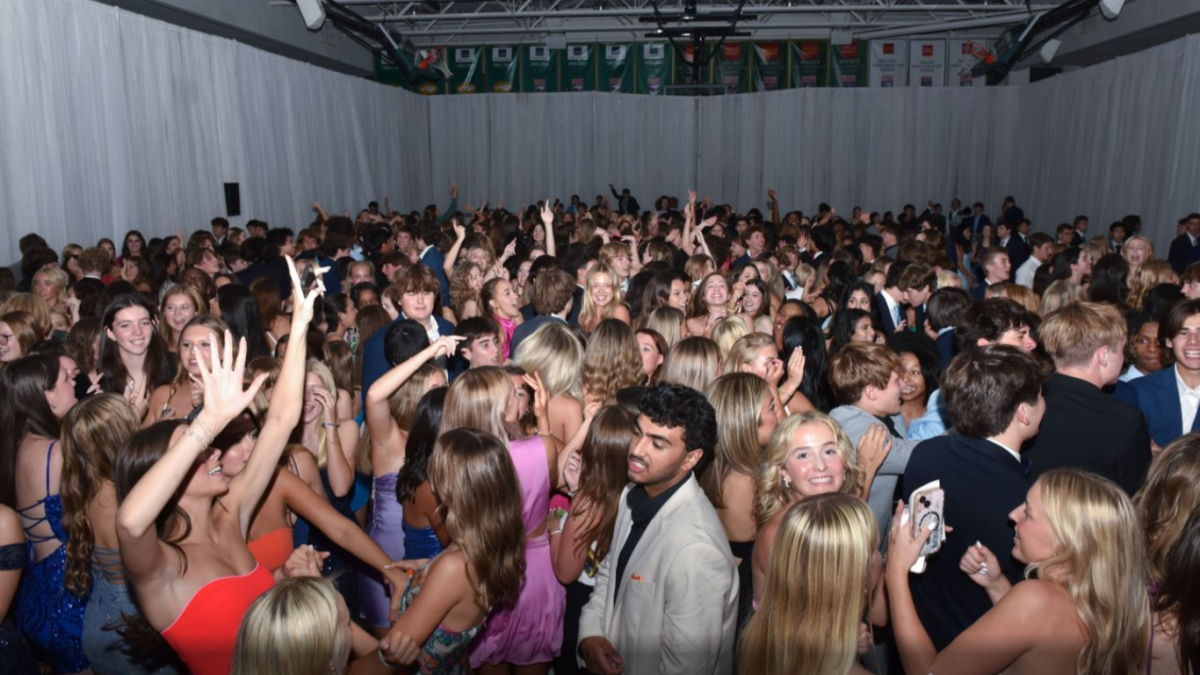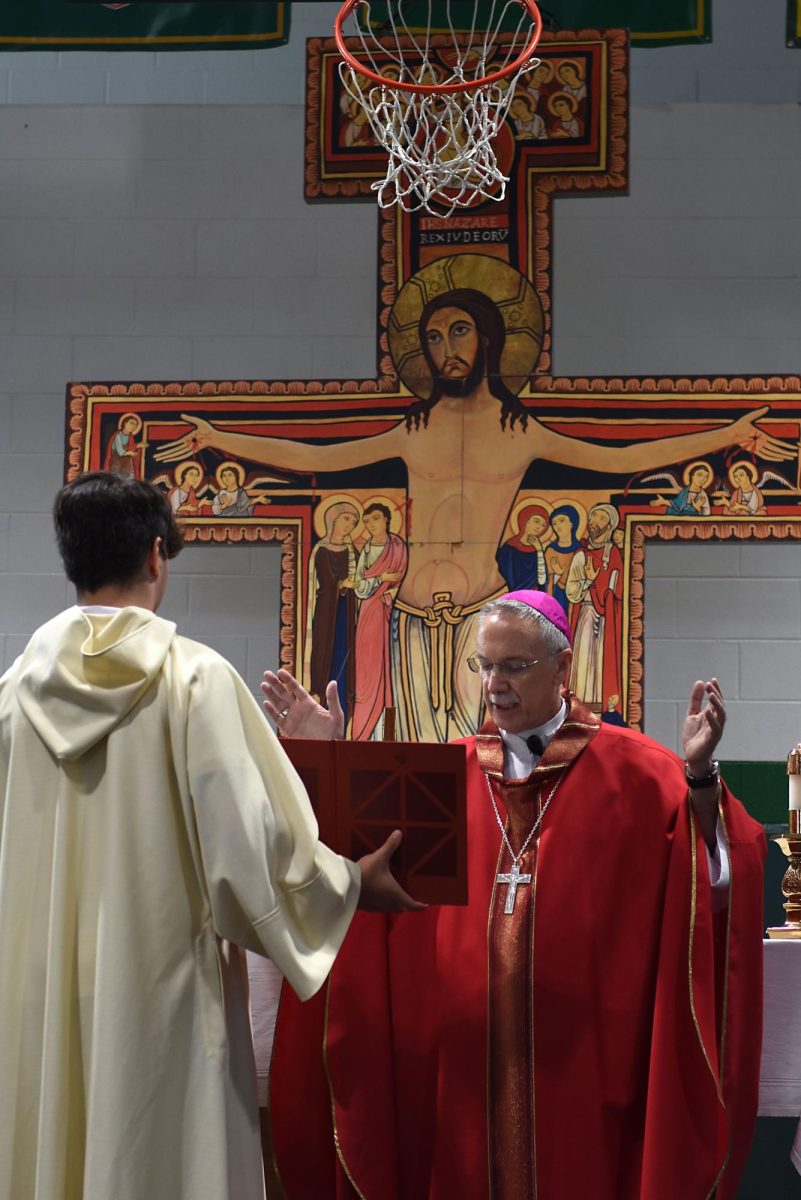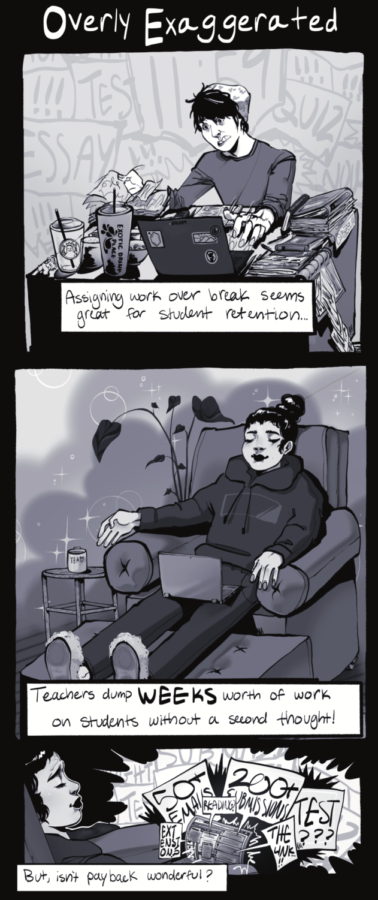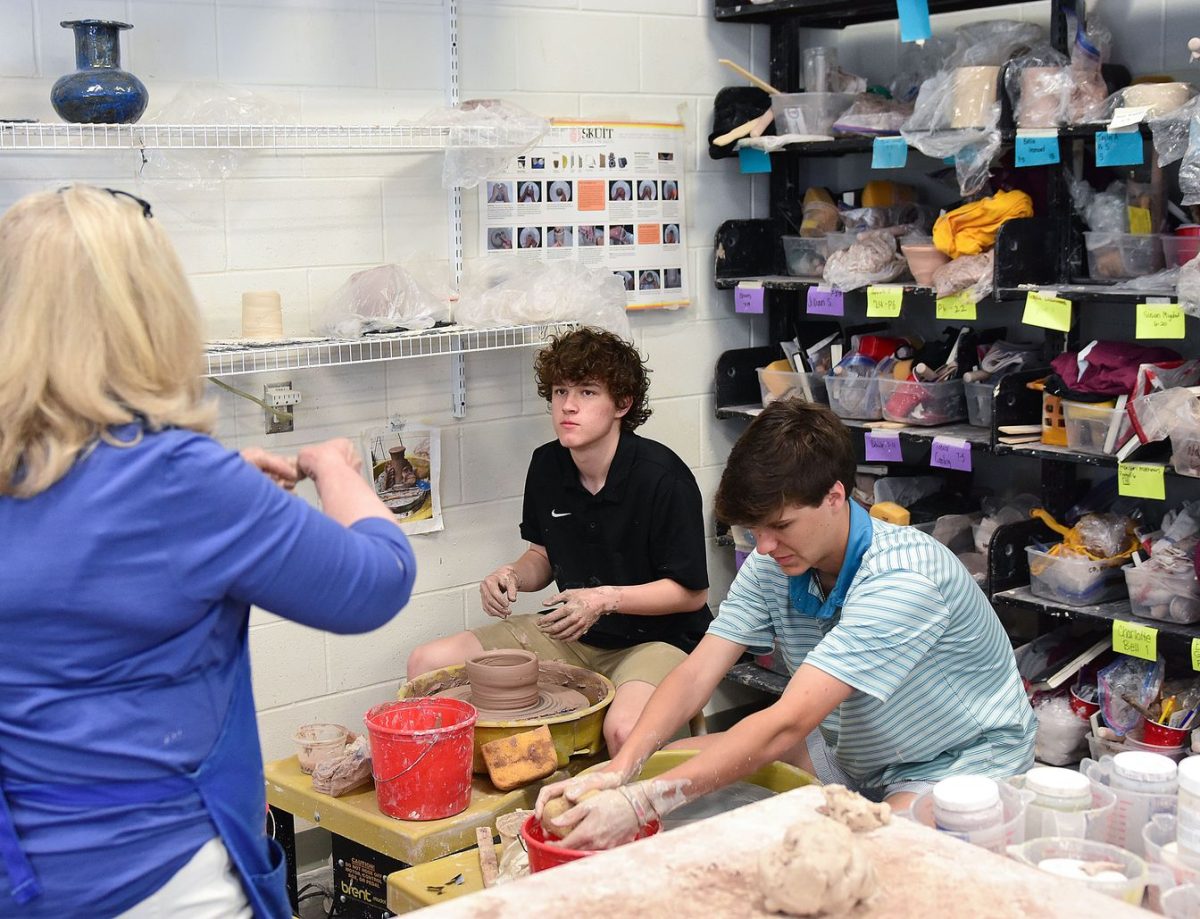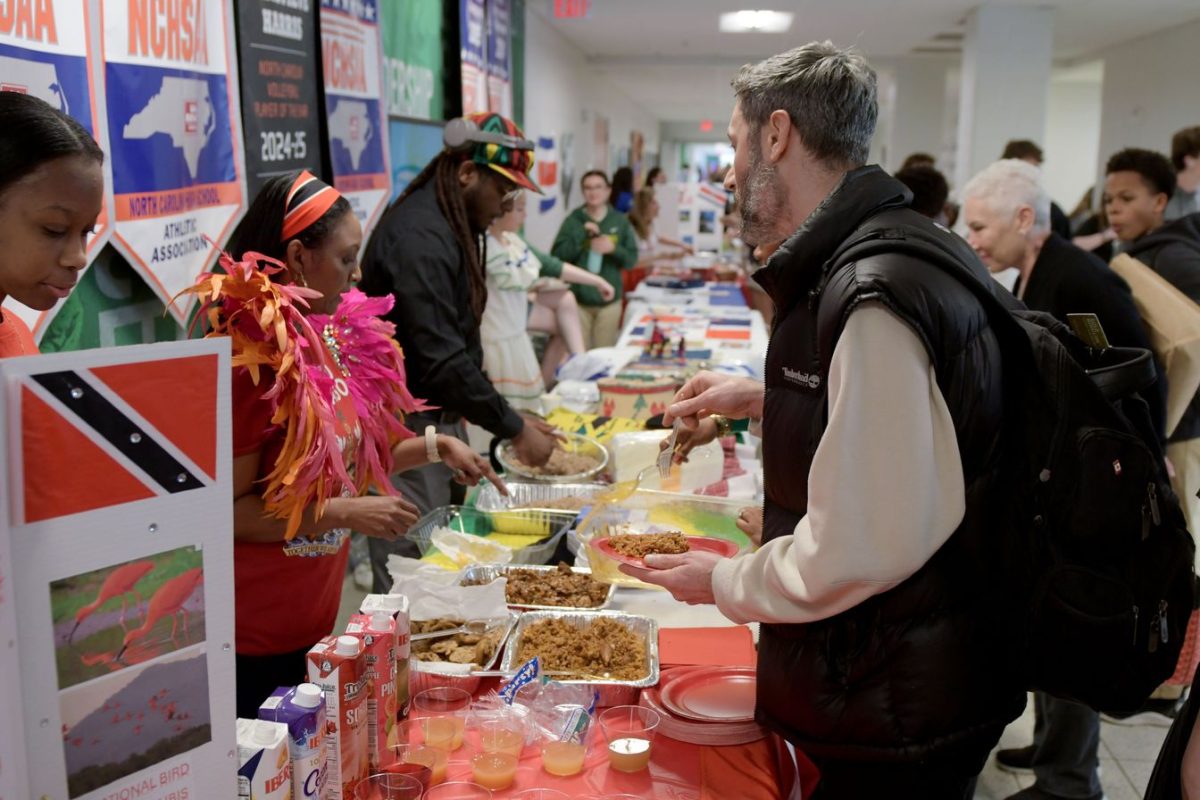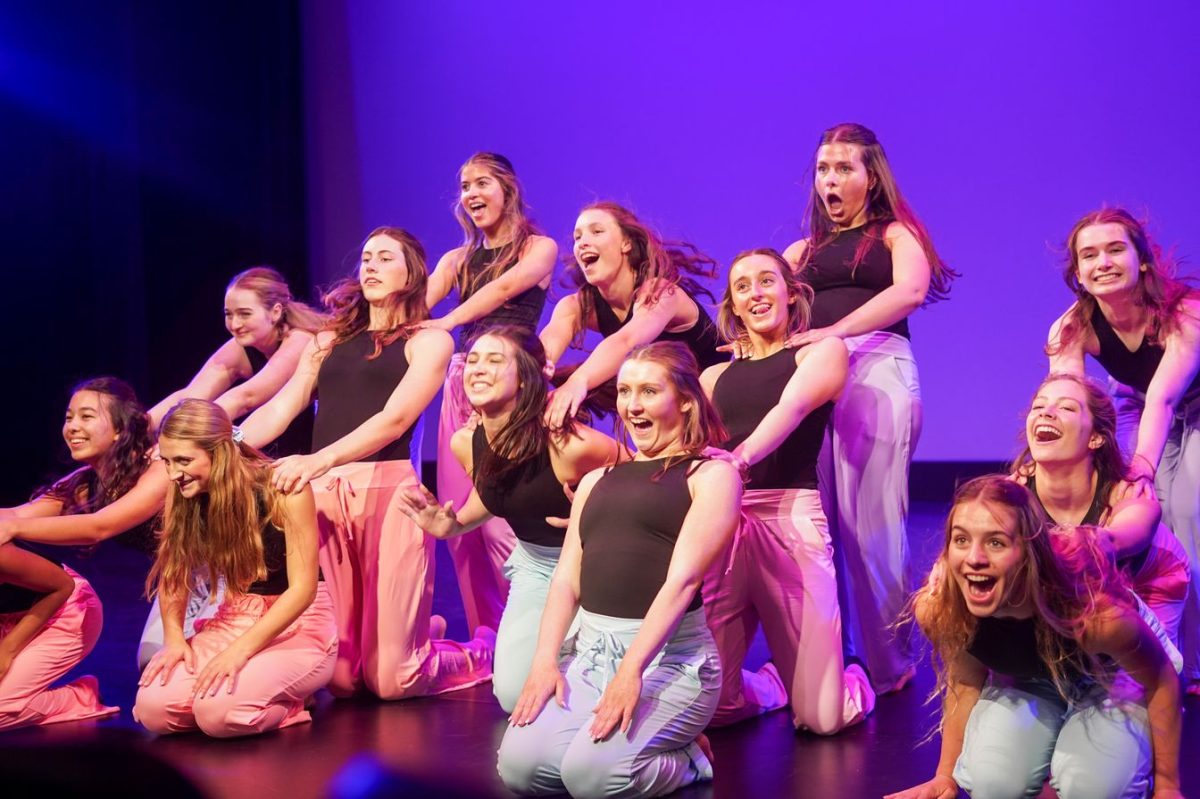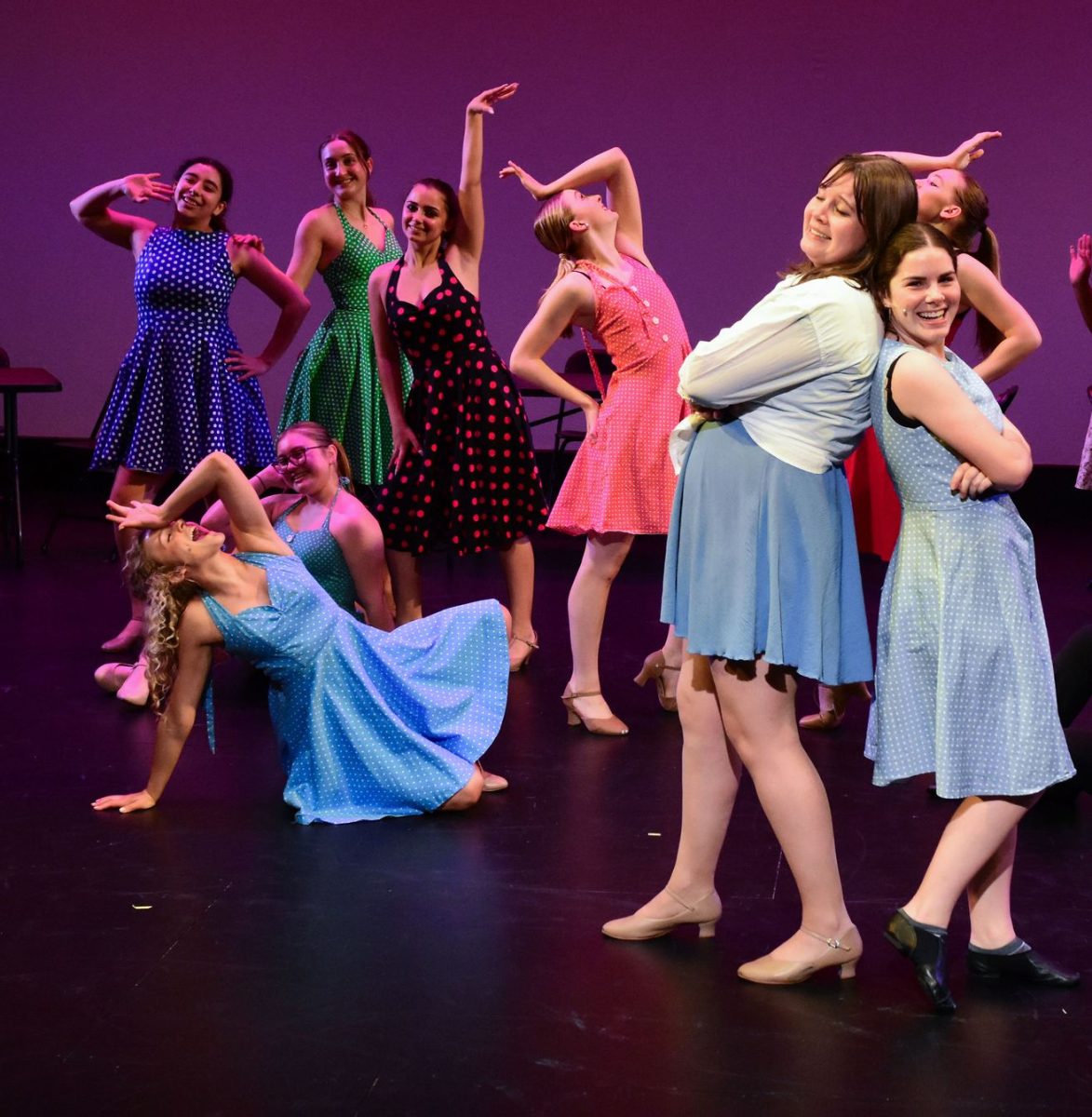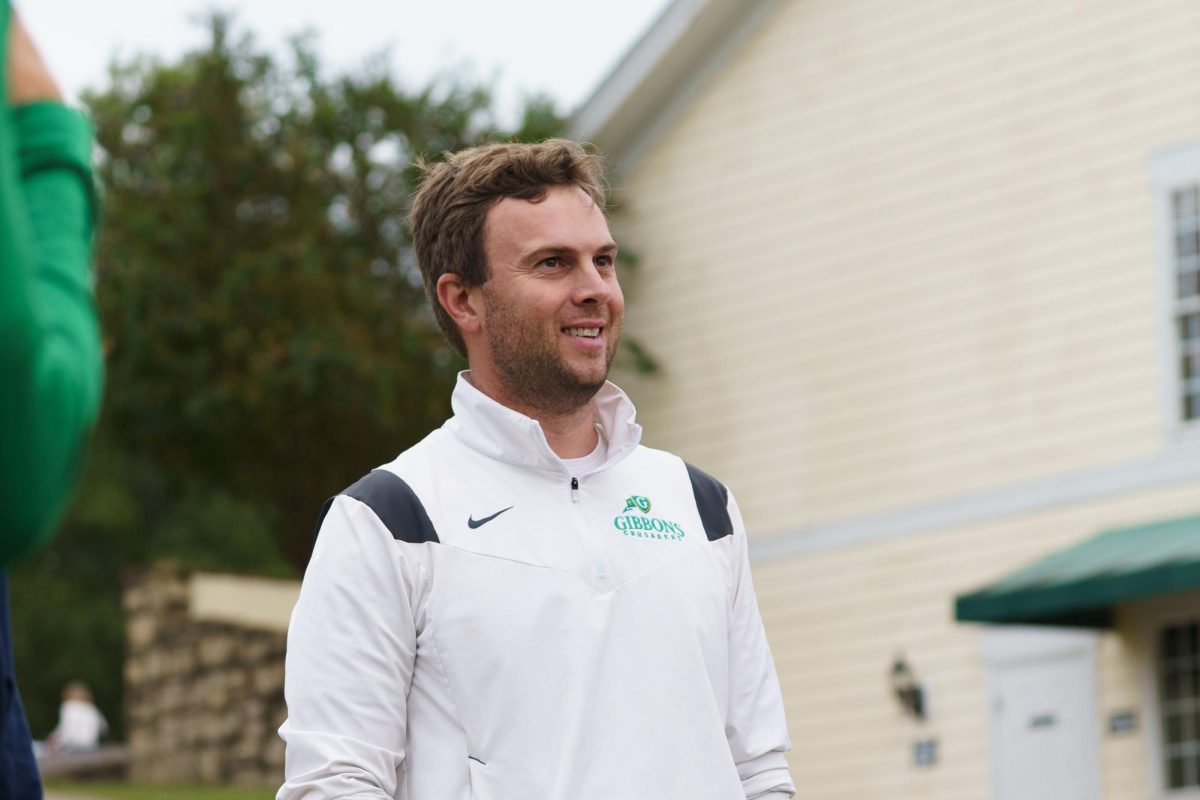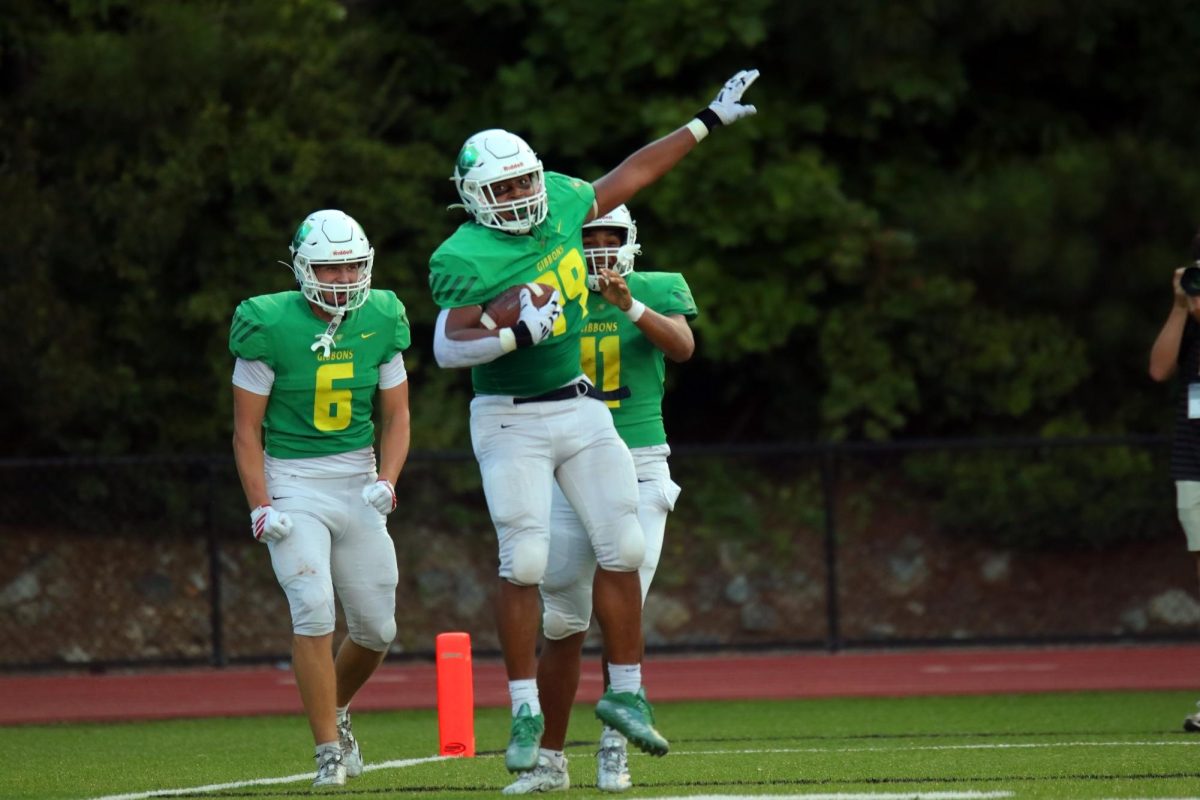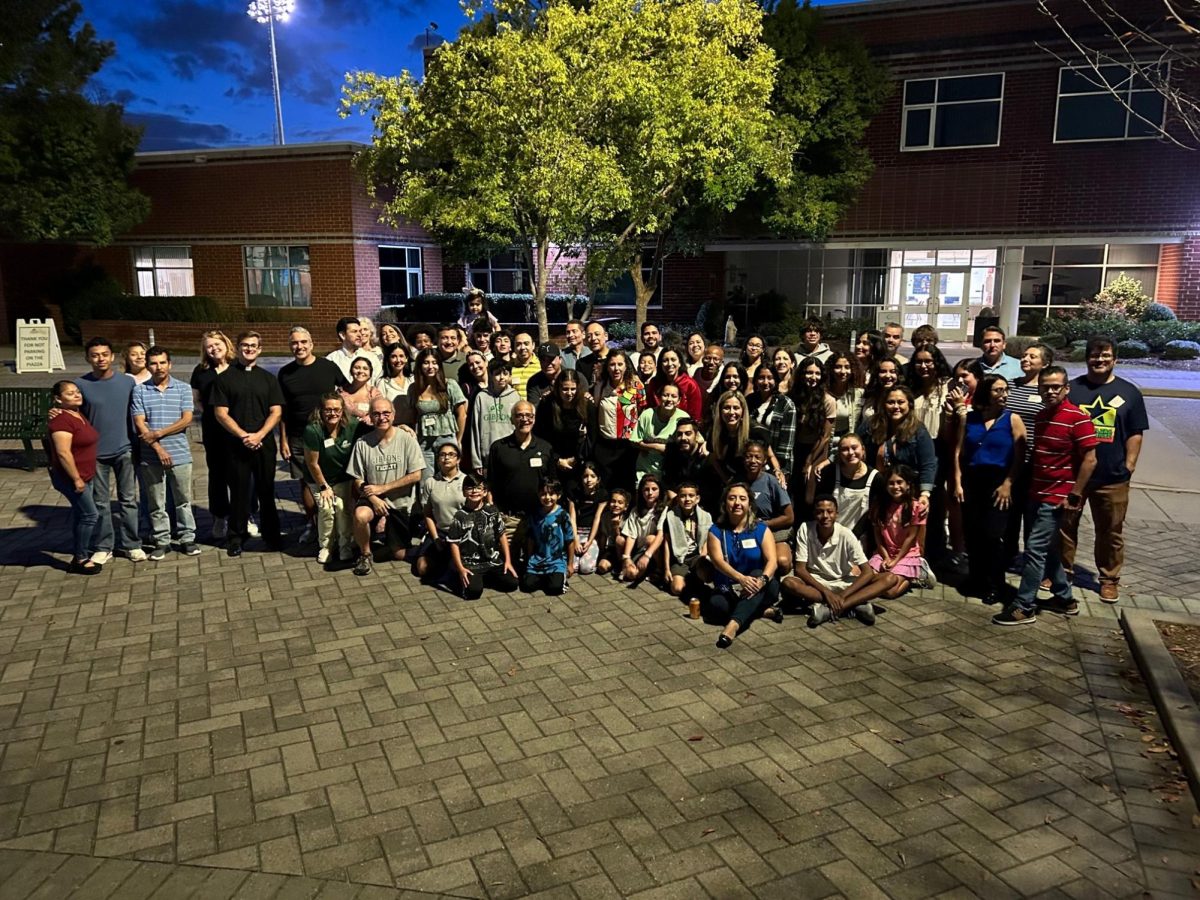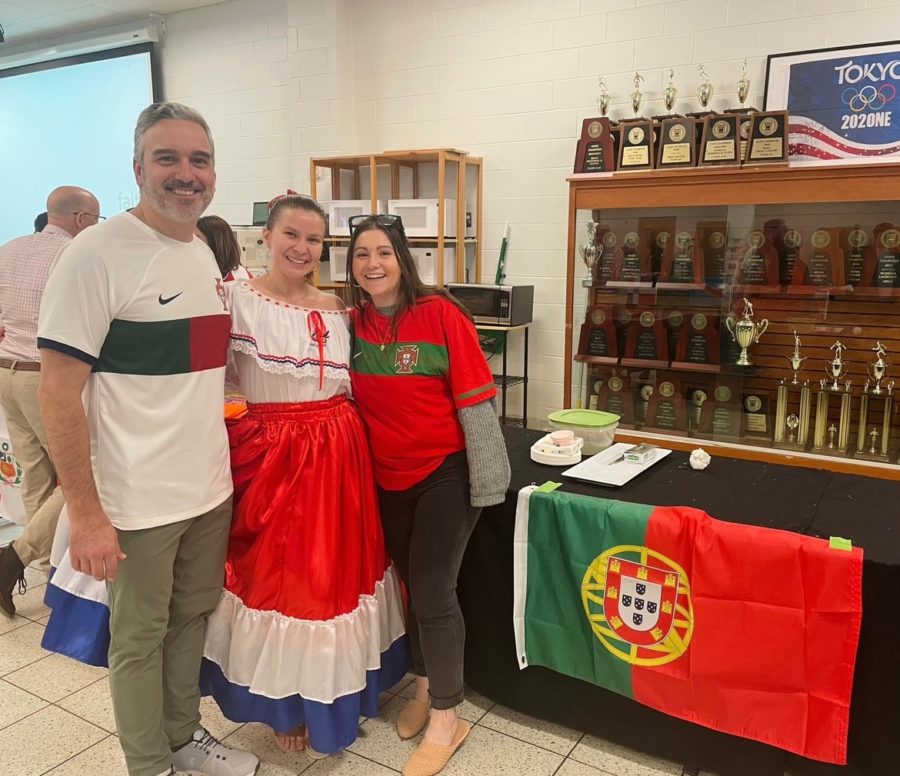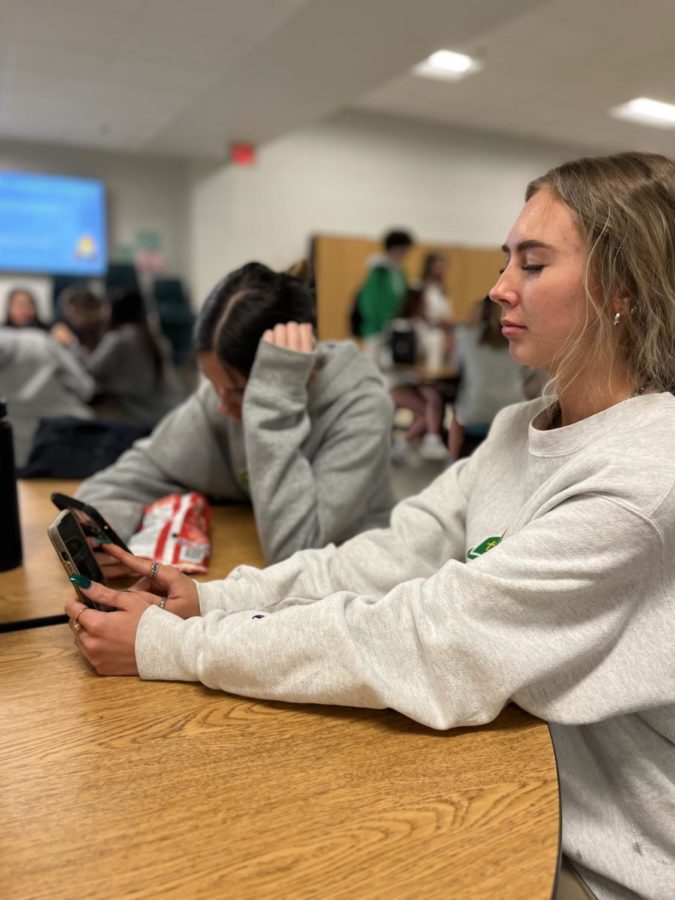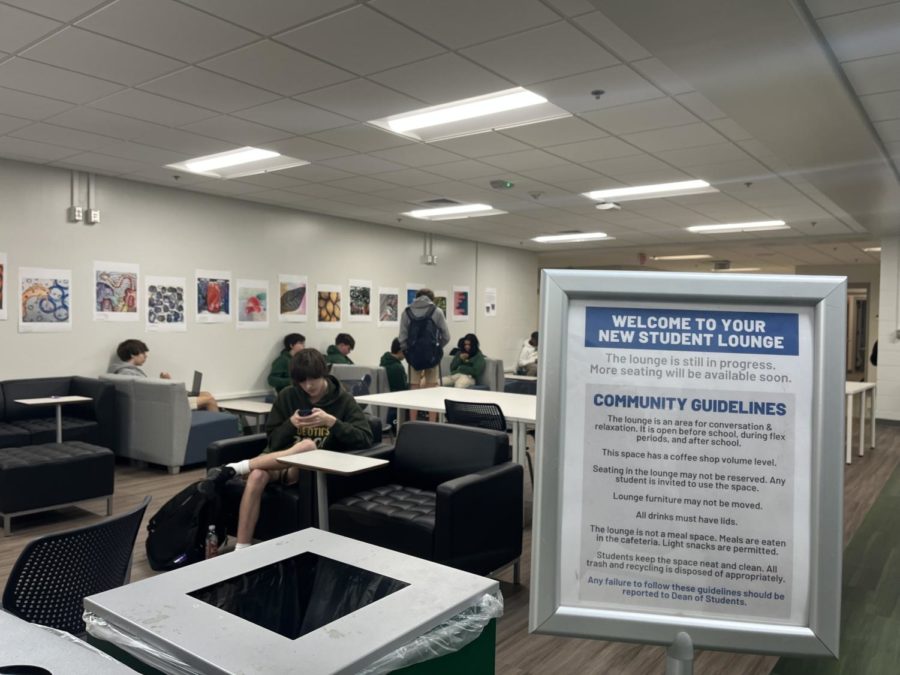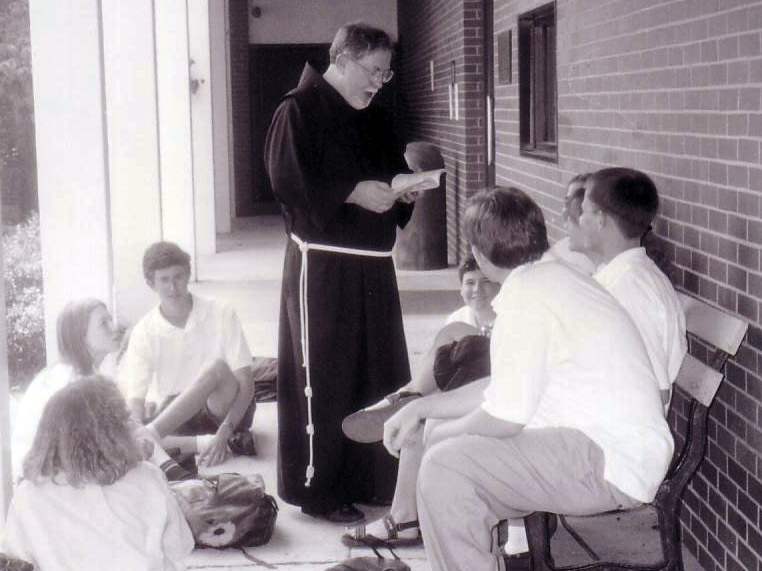This year, Cardinal Gibbons introduced four school houses, each named in honor of a founding organization responsible for the school’s unique culture and history. The Dominican, Franciscan, Notre Dame, and Monica Houses are named after the respective organizations: The Dominican Sisters, The Sisters of Notre Dame, The Franciscan Brothers, and Saint Monica Grade School.
But what role did these former organizations play in the past, and how do their actions continue to impact the school today?
The Dominican Sisters (Dominican House)
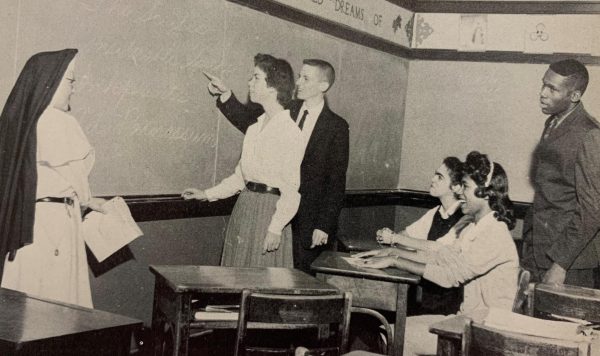
Cardinal Gibbons, previously known as Sacred Heart Academy, was founded in 1909 under the leadership of Fr. Thomas Griffin and four Dominican Sisters. The Sisters all took vows of chastity, poverty, and obedience before entering into nunhood, but their order dedicated their work to education. Starting the school out of the Pulaski-Cowper Mansion, students formed a tight community, even teaching one another across grade levels.
The Dominican Sisters played a crucial role in the very founding of Cardinal Gibbons.
“They were the order that opened our doors,” said alumni director Susan Leigh.
After years of dedication to education, the Order of Dominican Sisters underwent a global vote, switching their roles from educators to social workers. As a result, the Dominican Sisters stepped down from their roles as Cardinal Gibbons educators in 1971, nearly 60 years after the school first opened. Their departure from Cardinal Gibbons ultimately led to the school’s shutdown in May of 1971 due to a lack of available staff.
Though the class of 1972 was unable to complete their senior year at Cardinal Gibbons, the school still recognizes them as the Class of 1972. In 2022, Susan Leigh hosted a 50th-anniversary reunion celebration for the “forgotten” class, welcoming them warmly as true Gibbons alumni.
The Sisters of Notre Dame (Notre Dame House)
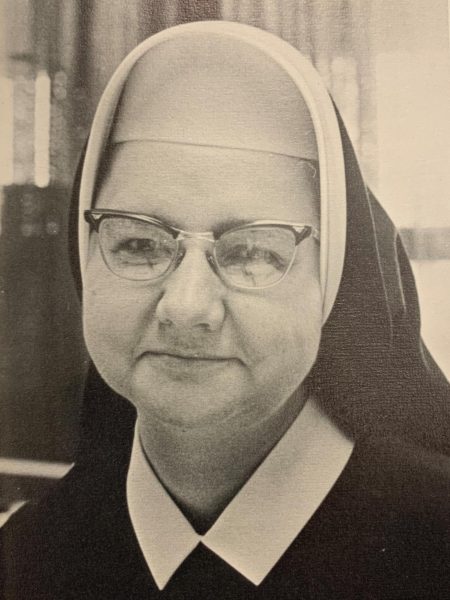
Following the school’s shutdown in 1971, Cardinal Gibbons reopened in August of 1972 under the leadership of Principal Sister Mary Teresita and The Sisters of Notre Dame. After the school’s temporary closure, only 10 prior students returned for their sophomore and junior years, the remaining student body consisting of new Crusaders. The Sisters of Notre Dame picked up quickly where The Dominican Sisters had left off, expanding the school’s numbers exponentially and subsequently moving the school’s campus to a larger location at Western Boulevard.
Under their leadership, Gibbons also experienced an expansion of opportunity with the launch of female sports teams. The Sisters continued devoting themselves to the school, serving passionately as educators up until the retirement of former chemistry teacher, Sr. Janet Schemmel, and former science teacher and office worker, Sr. Mary Jean Korejwo, in June of 2020.
The Franciscan Brothers (Franciscan House)
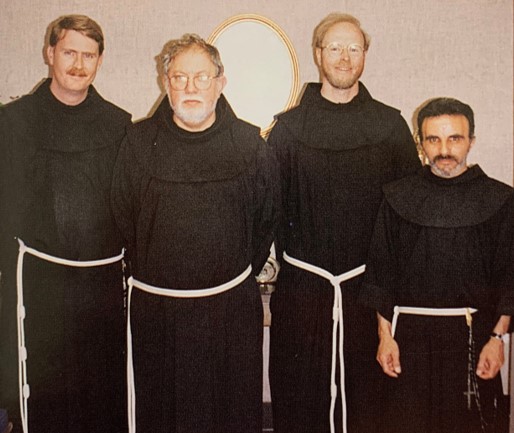
Based out of Brooklyn, the Franciscan Brothers are remembered as the only male religious order to have served at Cardinal Gibbons. In the 1990s, due to a loss of community and structure within the school, a group of Cardinal Gibbons parents reached out to The Franciscan Brothers requesting their help in re-envisioning the school. The Franciscan Brothers began their service in 1994, with Brother Michel taking on the title of principal for over a decade.
Hoping to unite its students, khaki and white uniform colors were introduced to the student body by The Brothers. This was met with protest from the graduating class. As a compromise, the seniors were allowed to dress down in “senior dress code”, a tradition that would carry on with the senior classes to come. Due to continuous growth, The Brothers moved Gibbons’ campus once more to its current location on Edwards Mill. The Brothers also jump-started the funding of Gibbons’ arts programs, resulting in the later creation of the arts wing.
“They envisioned a future that would include a school three times as big as when they arrived,” Ms. Leigh said.
After 12 years of service, The Brothers departed from the school in 2006. Though only with the school for a short period, their dedication to the community brought together not just students and educators, but alumni and student families as well.
Saint Monica (Monica House)
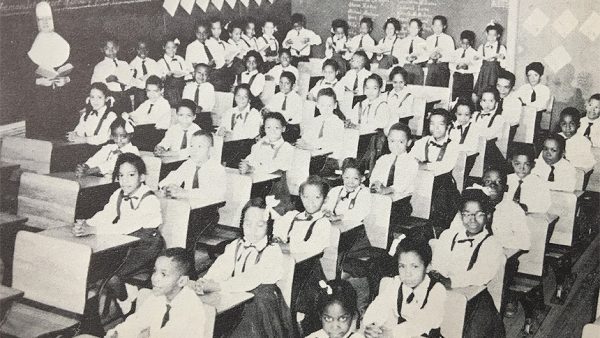
Saint Monica is the only Gibbons House not named after a religious order that served at Cardinal Gibbons. Rather, Monica House was named in remembrance of Saint Monica Grade School, the original all-black Catholic K-8 school built by the Catholic Diocese of Raleigh. The school remained operational up until 1967, when nearly all of Raleigh’s city schools were desegregated. Saint Monica is remembered for its tight-knit community, which remained even after its shutdown and the transfer of remaining students to Cathedral Latin, now known as Cardinal Gibbons.
On Aug. 31, 1954, Cardinal Gibbons High School integrated, which allowed Saint Monica students to continue their Catholic education throughout high school.
Cardinal Gibbons House Reflections
Though the development of the houses is only just beginning, the spirits and values of these past organizations can be found within them, and many hope to see the individuality of the houses grow through deeper connections with their history.
One way students have already connected with their House origins has been through the display of their House colors on unique armbands. House colors were not assigned at random, but were given to each group as a memorandum of these organizations’ colors. The colors of the armbands – blue and white for Dominican House, royal blue and gold for Notre Dame House, and brown and black for Franciscan House – are a nod to the colors of their respective robes or habits. Though they did not have official school colors, Monica’s navy blue armbands mirror the uniforms of the school’s previous students
Community within houses has also begun to form through friendly competition over The House Cup and the presence of student leadership at House Meetings.
Dominican House Leader Vicky Morita (Class of 2024) feels that the opportunity to run House meetings enables students the chance to lead and grow, similar to The Dominican Sisters who founded Cardinal Gibbons and strived for new development as a community.
“It’s all about learning from what you could have done better and applying it to your next challenge,” Morita said. “I think I have the best team alongside me…especially the Dominican leaders who have volunteered.”
The Franciscan Brothers emphasized interconnectedness between different Cardinal Gibbons groups. Similarly, houses allow students to bond with their peers from differing grade levels. Franciscan House Leader Sutton Stump (Class of 2024) values the community-building aspect these House Meetings create.
“We can build community as a larger group… and promote community across grade levels,” said Stump.
Though these past organizations are no longer physically present at Cardinal Gibbons, their impacts and legacies live on in the community. The formation of the houses not only connects students to the school’s past but encourages the betterment of the school through new developments and connections. Students and educators alike should take a step back, reflect on the history of their house, and appreciate the incredible legacy their House founders have left behind.

